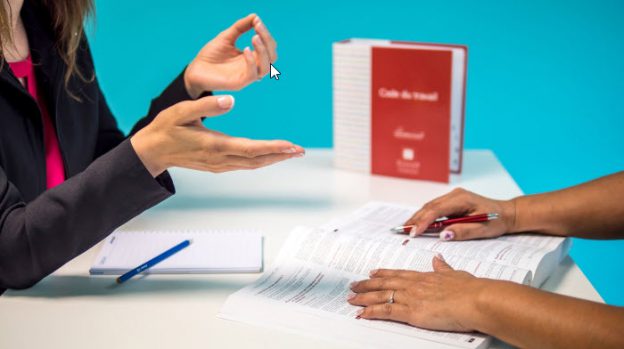Product liability cases are sentinel markers in the intricate tapestry of consumer protection and legal justice. They safeguard consumers against faulty products while holding manufacturers, distributors, and retailers accountable for their offerings.
The journey of a product liability case is marked by meticulous investigation, legal maneuvering, and the pursuit of a just resolution. This comprehensive examination delves into the anatomy of product liability cases, tracing the path from investigation to resolution.
Understanding Product Liability
Product liability refers to the legal responsibility of manufacturers, distributors, and sellers for any damages caused by defective products. This area of law aims to protect consumers from harm and ensure accountability within the production and distribution chain. The scope of product liability encompasses a wide range of consumer goods, including electronics, appliances, vehicles, pharmaceuticals, and more.
When a product is deemed defective, it can pose serious consumer risks, leading to injuries, property damage, or even death. Defects can occur at various stages of production, including design, manufacturing, and marketing. Design defects stem from flaws in the product’s blueprint, making it inherently unsafe regardless of how carefully it is manufactured.
Manufacturing defects, on the other hand, occur during the production process and result in individual products deviating from the intended design. Marketing mistakes involve inadequate warnings, instructions, or labeling, which fail to alert consumers to potential risks associated with the product’s use.
Product liability lawsuits typically involve claims of negligence, strict liability, or breach of warranty. Negligence requires plaintiffs to prove that the defendant breached a duty of care owed to consumers, resulting in harm.
Strict liability, however, imposes liability on defendants regardless of fault, focusing solely on the product’s defective nature and the resulting harm. Breach of warranty claims arises when a product fails to meet the terms of its express or implied warranties, leading to consumer damages.
One of the examples of product liability cases is that of Philip Morris. According to wbur.org, Patricia Walsh Greene filed a lawsuit against tobacco giant Philip Morris in 2015. She was diagnosed with lung cancer, which spread to her brain. She had to undergo multiple chemotherapy sessions and surgeries for treatment.
The case was filed for false advertisements. Greene said that she quit smoking in 1995. However, she started smoking Marlboro Light cigarettes, as they were advertised to have less tar and nicotine. The court ordered Philip Morris to pay $37 million as compensation.
The Investigation Phase
The journey of a product liability case typically commences with an incident triggered by a defective product. The investigation phase is pivotal, laying the groundwork for subsequent legal proceedings. Central to this phase is the collection of evidence, which may include:
- Gathering testimonials: Witness statements and accounts from individuals affected by the product defect serve as primary evidence. These testimonials provide insights into the incident’s circumstances and the resulting damages.
- Expert analysis: Engaging technical experts, such as engineers, product designers, and medical professionals, is crucial in assessing the nature and extent of the defect. Their analysis aids in establishing causation and quantifying damages.
- Documentation review: Examination of product specifications, manufacturing records, and quality control measures offers valuable insights into potential lapses and deviations from industry standards.
- Preservation of evidence: Preserving the product in its original state is essential to prevent tampering and ensure the integrity of evidence.
Legal Proceedings
The proceedings typically commence with filing a complaint by the injured party. The complaint outlines the allegations of defectiveness, the resulting damages, and the legal basis for holding the defendants accountable.
You might need help from an experienced attorney here. According to TorHoerman Law, a lawyer can help you throughout the legal proceedings. They can help you file a complaint, collect evidence to strengthen your case and negotiate with insurance companies. Moreover, they will know the local regulations to help you determine your case’s strength and ask for a settlement amount accordingly.
Consider the example of the Paragard lawsuits. According to Drugwatch, there are around 2,444 pending lawsuits as of February 2024. These cases are filed under multidistrict litigation 2974.
Plaintiffs of Paragard IUD lawsuits claim that the birth control device can break during removal. This can result in various injuries, including internal bleeding, ectopic pregnancy, pelvic inflammatory disease (PID), infection, etc. If you have suffered any of these problems after using the IUD, you can file a Paragard lawsuit.
However, you might not know the right settlement amount for your case. This is where an experienced attorney can become extremely useful. For instance, Paragard lawsuit settlements can range from $10,000 to $400,000. However, if you are unaware of your case’s strength, you might settle for a smaller amount.
Once the complaint is filed, the defendant is served with a copy and has a specified response period. Following the initial pleadings, both parties engage in a process called discovery, where they exchange relevant information, documents, and evidence about the case. Discovery mechanisms may include interrogatories, requests for the production of documents, depositions, and expert witness disclosures.
After the discovery phase concludes, the parties may attempt to resolve the dispute through settlement negotiations or alternative dispute resolution methods. The case is resolved without proceeding to trial if a settlement is reached.
In the event that settlement negotiations fail or if either party chooses to proceed to trial, the case is litigated in court. During the trial, both sides present their arguments, evidence, and witness testimony to support their positions. The plaintiff bears the burden of proving the existence of a defect, causation, and damages by a preponderance of the evidence.
Resolution and Remedies
The resolution of a product liability case culminates in determining liability and allocating remedies to the injured parties. Potential remedies may include:
- Compensatory damages: Compensatory damages seek to redress the losses suffered by the injured parties. These losses include medical expenses, lost wages, pain and suffering, and property damage.
- Punitive damages: In cases involving willful negligence, punitive damages may be awarded to deter similar misconduct in the future and punish the wrongdoer. For example, General Motors had to pay punitive damages of $4.9 billion for faulty gas tanks in its Chevrolet Malibu’s 1979 models. Six individuals were severely burned because of this, and they filed lawsuits against General Motors.
- Injunctive relief: Besides monetary compensation, courts may order injunctive relief, mandating corrective actions or product recalls mitigating future consumer harm. One recent example of a recall is that of Johnson & Johnson’s talcum powder. According to The Guardian, the company said 33,000 talcum powder bottles will be recalled. ABC News states the company also agreed to pay $8.9 billion to settle baby powder lawsuit claims.
To conclude, the anatomy of product liability cases is characterized by a multifaceted process. It encompasses investigation, legal proceedings, and resolution. From the initial stages of evidence collection to the final resolution of liability, each phase is imbued with complexity and nuance.
As consumers and manufacturers navigate the intricate terrain of product safety and liability, adherence to rigorous quality standards and vigilant oversight remain paramount. Product liability cases serve as a potent instrument of accountability in pursuit of justice, ensuring that consumer safety remains paramount in the marketplace.


